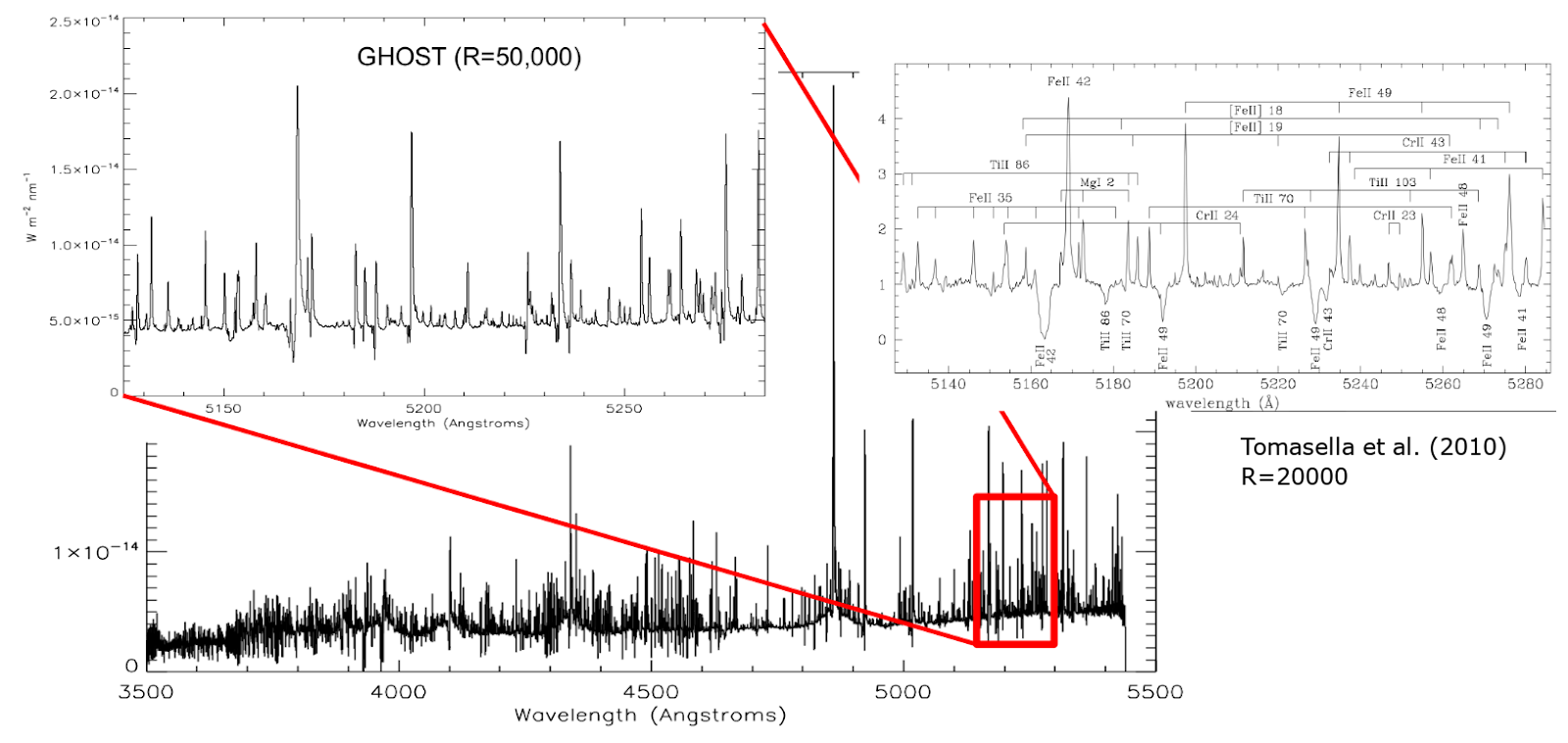We are pleased to present the first GHOST science observations that have been reduced with the GHOST pipeline. We are releasing the spectrum of XX Oph (Be + Red Supergiant; V= 8.59-10.2 mag) as an example to showcase the spectral range, spectral resolution, and overall quality of data that GHOST can provide in standard resolution mode (R=50000; with a total integration time of 240s, and a wavelength range of 347 to 1060nm).

Fig. 1: The blue spectrum of XX Oph taken using GHOST. Shown in the zoom-in on the top left are the spectral features around 520nm, which can be compared to a lower-resolution spectrum in the right inset.
These data were reduced with a beta version of the GHOST Data Reduction pipeline that works under DRAGONS 3.0. While the pipeline is still undergoing testing as part of System Verification (SV) activities, a comparison of the reduced spectrum with a lower resolution (R=20000) spectrum from Tomasella et al. (2010) already reveals excellent agreement, providing identification of the multitude of metal lines present in the GHOST spectrum. It also highlights the changes in strength for some of the lines in the spectrum of this variable star between the previous observations and now. The preliminary version of the reduced spectrum can be downloaded here. Again please note that the pipeline, while available, is still undergoing testing, and Gemini user support for data reduction issues will not be available until the initial release in August/September.
We are excited to continue our work on the GHOST instrument as part of on-going SV activities, and look forward to sharing more results and reduced data products to prepare the scientific community for the first open Shared-Risk Call for Proposals in late August. For the latest updates, please check the Gemini GHOST SV webpage